One of the World's Most Anticipated Hotels Just Opened in NYC — With a Garden Terrace, Underground Jazz Club, and Wildly Expensive Suites
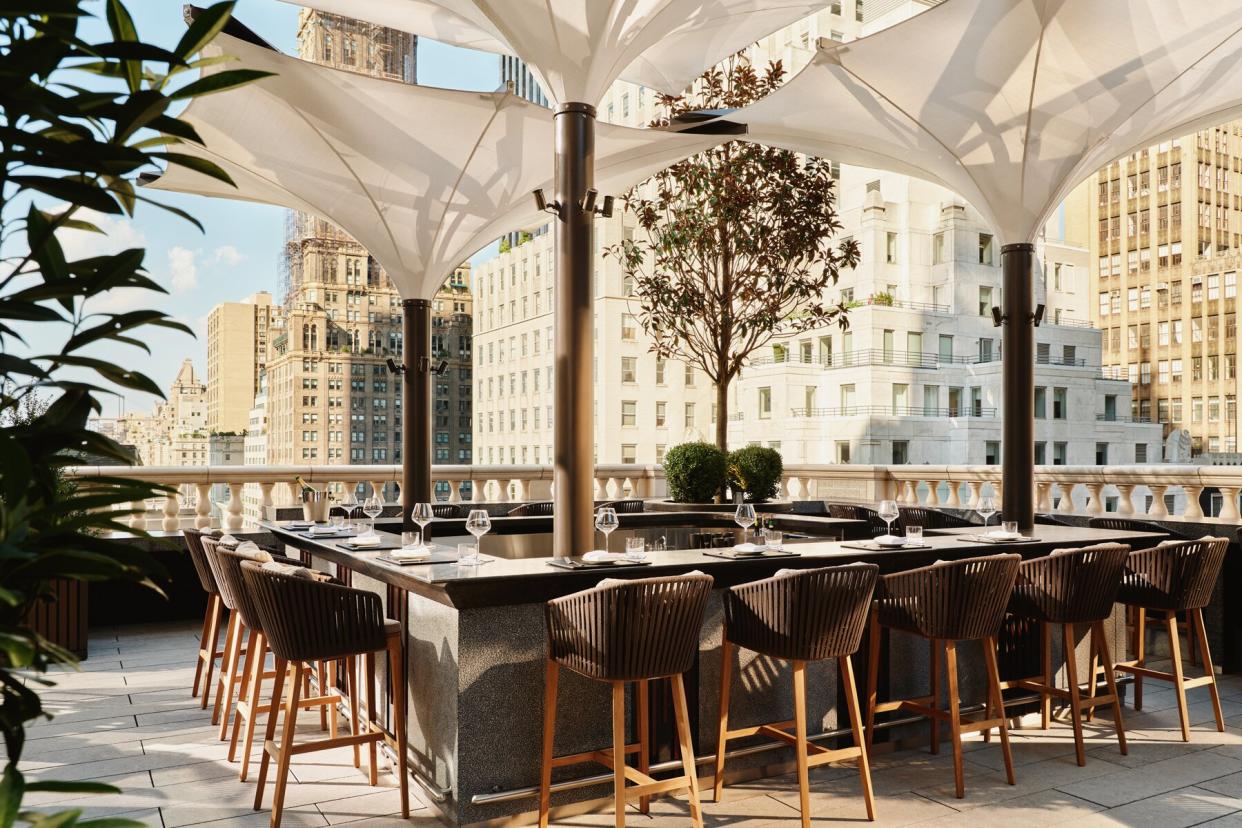
Robert Rieger/Courtesy of Aman Resorts
At 10:30 p.m. on Thursday, Aug. 11, I sprawled on a lounger by the window of room 810 at the newly opened Aman New York, swathed in a deliciously soft Frette linen robe, my feet propped in front of the fireplace. Coming down from a respectable business buzz — a glass of Taittinger and a Hendrick's martini — with a dark chocolate–covered caramel, I reveled in, as either Simon or Garfunkel might say, the sound of silence.
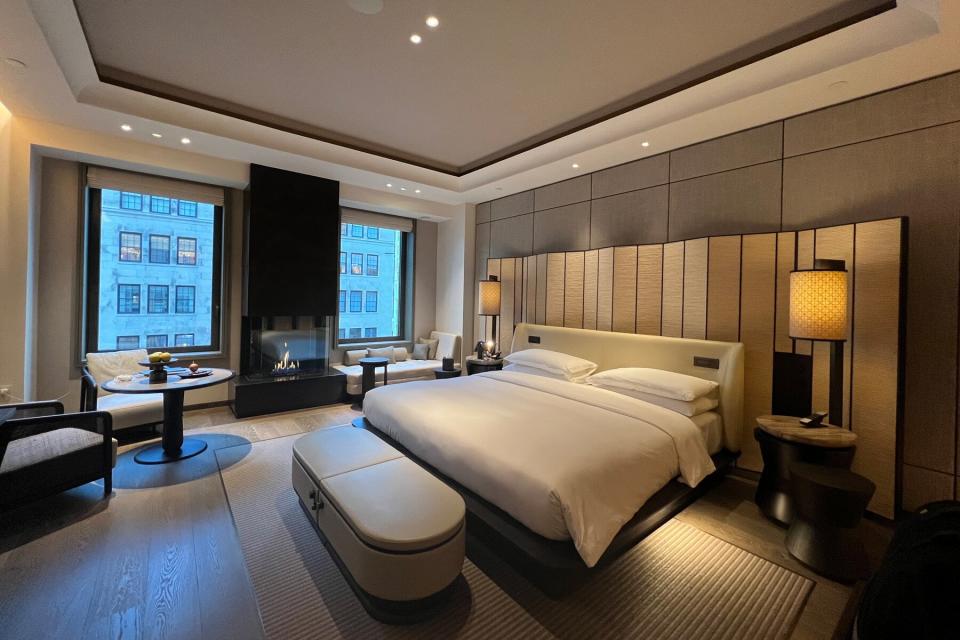
Maya Kachroo-Levine
Nine hours before, when I entered the Crown Building at 57th Street and Fifth Avenue, home to luxury hospitality brand Aman's second city hotel in its 34-resort portfolio, I learned just how quickly that silence envelops guests. Once you ascend to the main reception area on the 14th floor, or to any of the 83 suites occupying the seventh to 12th floors, the sounds of midtown completely fall away.
It's something the hotel management is quite proud of; Aman New York's director of marketing, Simon Kopec, went so far as to run a sound test with me during our tour of a 2,025-square-foot Corner Suite (from $20,000 a night — yes, really).
"Hear that?" He asked, in reference to the rush hour traffic, which had started to pick up 10 stories below.
"No," I said.
"Exactly," he replied.
I'm not one for hotel-tour magic tricks, but Kopec's point was irrefutable: Inside this hotel, guests are impervious to the auditory intrusions of New York City. But indulging in the coveted moment of NYC silence felt most luxurious when alone in my 850-square-foot hotel suite, after a meal at on-site Italian restaurant Arva, some live music at the underground Jazz Club, Aman's not-yet-open speakeasy, and a nightcap on the 14th-floor Garden Terrace.
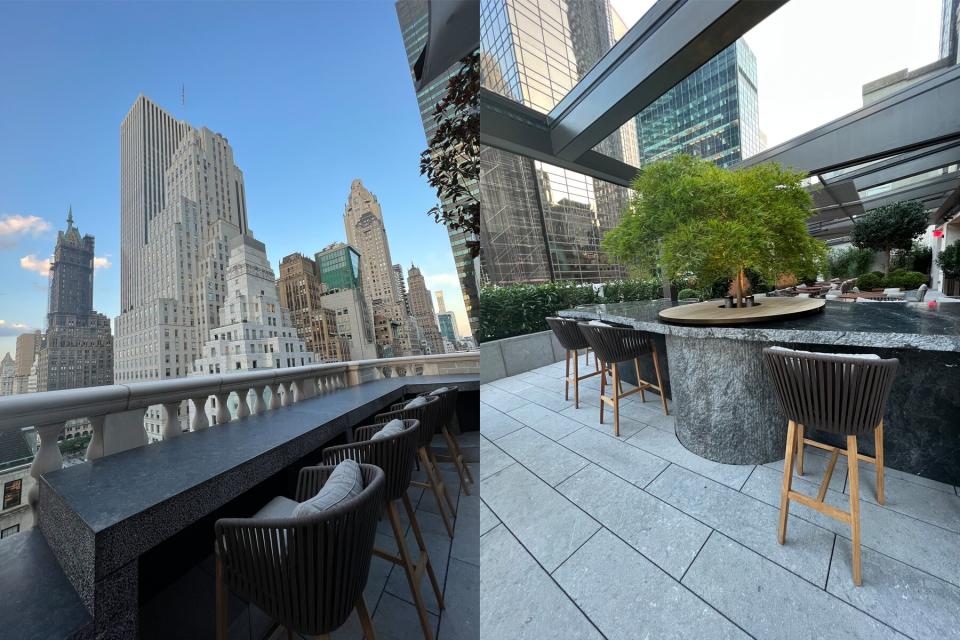
Maya Kachroo-Levine
"A terrace on the corner of 57th and Fifth is difficult to beat," Jean-Michel Gathy, the designer behind Aman New York and principal of Malaysia-based architecture firm Dennison tells me. The week before I was allowed into the hotel, I'd met with Gathy, one of three architects credited with creating Aman's "design DNA," as he calls it, when the brand took shape in the late '80s.
While Gathy admits there are plenty of unavoidable challenges that come with creating a luxury hotel within the confines of an historic building, he says the "possibility of doing things that nobody else had" far outweighed the (at times frustrating) design idiosyncrasies.
His favorite example? "How many bedrooms do you know in New York City that have a fireplace between two windows? The building gave us that possibility. It's an expensive detail, like hell. But it's luxurious."
Sitting next to that window watching the glass-enclosed flames dance, as I moved onto my second gold-flecked chocolate, all I could think was: can confirm.
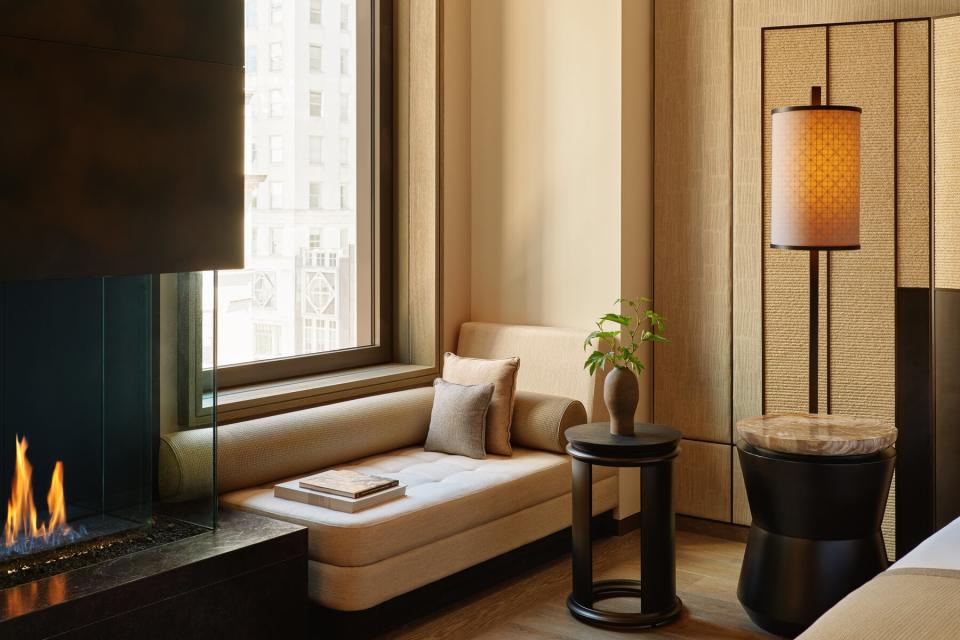
Robert Rieger/Courtesy of Aman Resorts
Those "expensive details" translate to an astronomical barrier to entry, especially considering Aman New York is not yet open for public consumption. To even cross the velvet ropes (yes, there really are velvet ropes) at the discreet entrance on 57th Street and ride the elevator to the 14th-floor common areas, you must be a guest of the hotel; the nightly cost of an entry-level suite starts at $3,200.
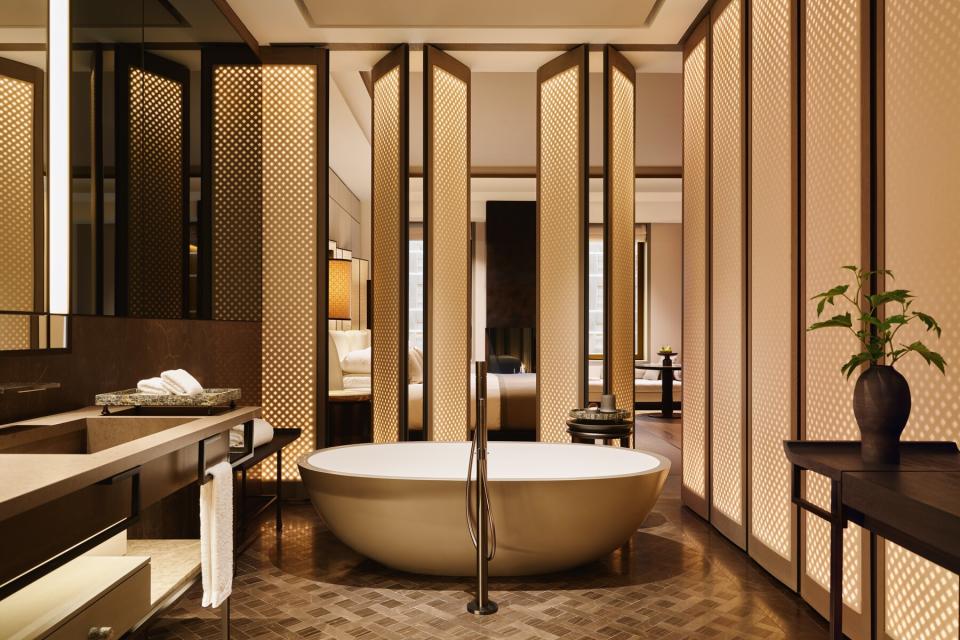
Robert Rieger/Courtesy of Aman Resorts
Alternatively, you can pay $200,000 for admission — that's the recently hiked cost of an Aman Club membership, plus $15,000 in annual dues. Aman CEO and chairman Vlad Doronin bet big on the club model, and it's paid off thus far; the club already has a waiting list, despite the membership fee doubling in recent months. The Aman Club — which exists only in New York City and at the brand's first urban hotel in Tokyo — "is being driven by the demand of our loyal guests, who are seeking priority access to Aman destinations around the world, particularly as we open in more city destinations," he tells Travel + Leisure. The openings: Aman Nai Lert Bangkok (late 2023), Aman Miami Beach (2024), and Aman Beverly Hills (2026).
The final way in to the serene fortress is by far the most expensive: residency. Floors 15 to 30 house 22 residences, only two of which are unclaimed. The penthouse sold in the project's infancy for $180 million and comprises the top five floors of the Crown Building. Suffice it to say, if you're after a glass of Champagne at the Garden Terrace's marble bar, it'll cost you significantly more than the $34 sip of Taittinger.
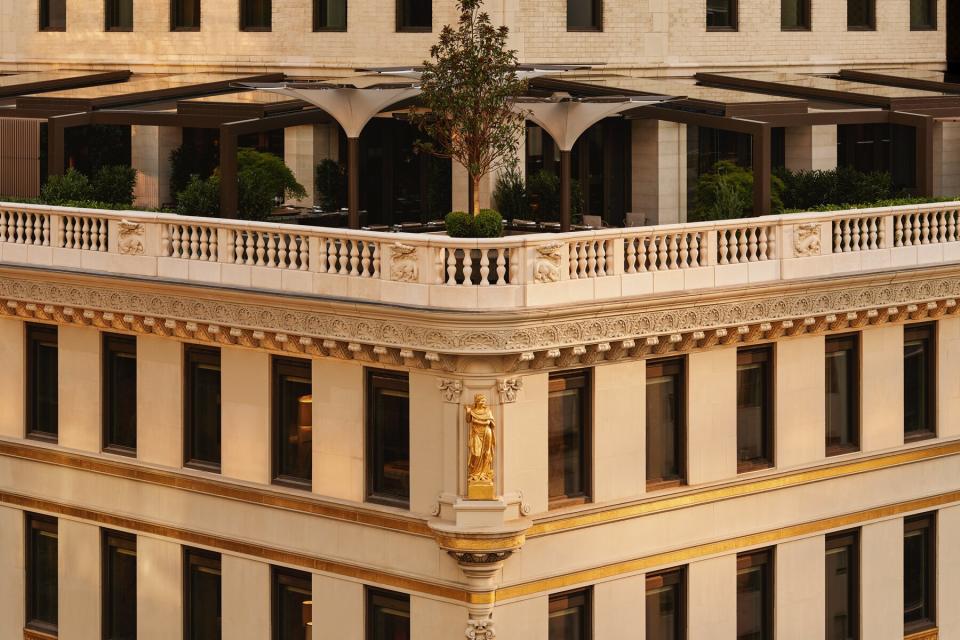
Robert Rieger/Courtesy of Aman Resorts
While there are soon to be at least 22 Aman-approved permanent occupants, the Crown Building was never meant to be residential. In 1920, August Heckscher, owned the three-story office complex on "Billionaire's Row," which was then dominated by Vanderbilt and Astor family–funded mansions. As business development began to take hold in the posh 57th Street enclave, Heckscher announced his intention to transform his (relatively humble) office building into a taller structure with French Renaissance and neoclassical influence.
When the new build was completed in 1921, The New York Times, quoting an architecture magazine, called the Crown Building a "glorious chateau." Designed by Whitney Warren and Charles Wetmore, the architects behind another iconic NYC beaux-arts landmark, Grand Central Terminal, The Times said of the building: "Although the lower floors were fairly lavish in detail, it was the tower section that was the striking element, with stone and terra cotta banding, parapets, dormers and a giant chimney stack, surely one of the most elegant in New York."
That tower section got the building crowned (just let me have it) one of the tallest buildings in NYC in 1921. And in the 10 years before the Empire State Building trounced it (by 800 feet, no less), the Crown Building housed the first iteration of New York's Museum of Modern Art. As Doronin says, one of the "core values of the brand [is] exceptional locations." That's exactly what this building is.
Doronin announced the project in 2017, two years after his company, OKO Group, bought the Crown Building. (Translation: Doronin runs both the company that owns the hotel and the one that operates it, a rarity in the hotel industry, where there is usually a development entity working alongside the hospitality group.) As he further expands the Aman portfolio, the CEO says he continues to look for gaps in the market. One such opportunity? "I discovered there was not enough focus on tranquility and peace in urban settings, particularly in New York City," he says.
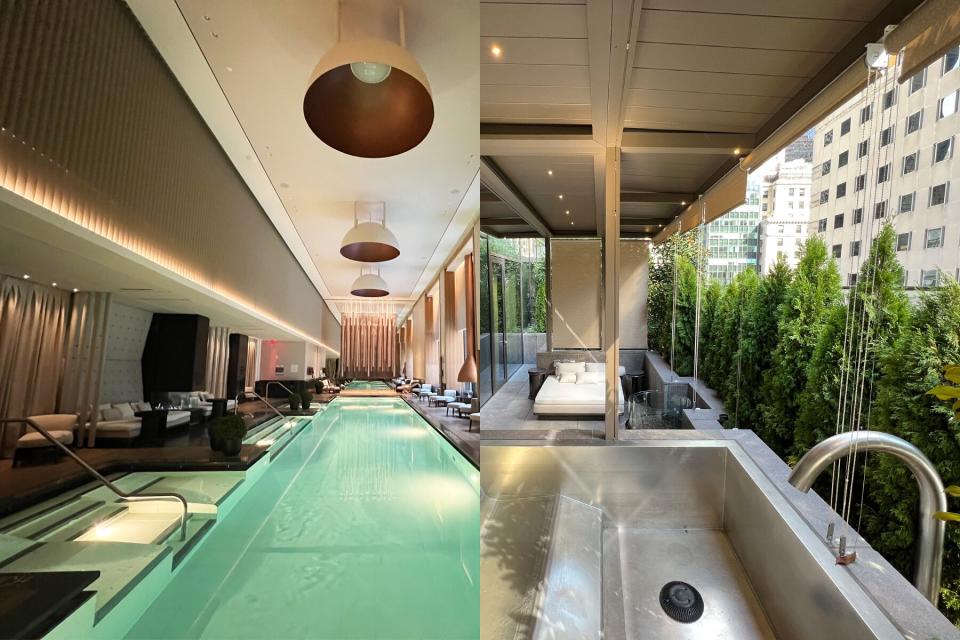
Maya Kachroo-Levine
Cultivating a sense of "aman" (meaning peace in Sanskrit) in the heart of NYC, meant "bringing the Aman resort experience from the horizontal to the vertical," Doronin tells T+L. Rather than spreading horizontally over 600 hectares at Amangiri, the brand's celeb-studded Utah property, the Crown Building commands 117,000 square feet of vertical space — and yet, the spa is nearly the same size as Amangiri's, stacked across three floors. My favorite floor of the spa was, unsurprisingly, the 10th, home to the fireplace-lined, 65-foot swimming pool and Aman's two "spa houses," each of which have either a private hammam or banya and outdoor tubs.
While floors nine to 11 hone in on tranquility and Asian-inspired wellness treatments, Arva — currently the only dining option open at Aman, though Japanese restaurant Nama will follow by September — prioritizes function. The food is simple and well-executed, but it's not chasing down Michelin stars. In fact, it's a far different approach from, for example, the new Ritz-Carlton NoMad, where they've brought in a coveted José Andrès dining concept with another on the way. "We don't want a restaurant where the whole population comes and stays for six hours," Gathy says.
"Some people say, 'Oh, you could have done more,' but we decided altogether, with Aman, that we wanted a restaurant that serves a purpose: important people meeting," he continues. "They have a drink in the bar or at the lounge, they have dinner, and then they sit outside on the terrace and smoke a cigar."
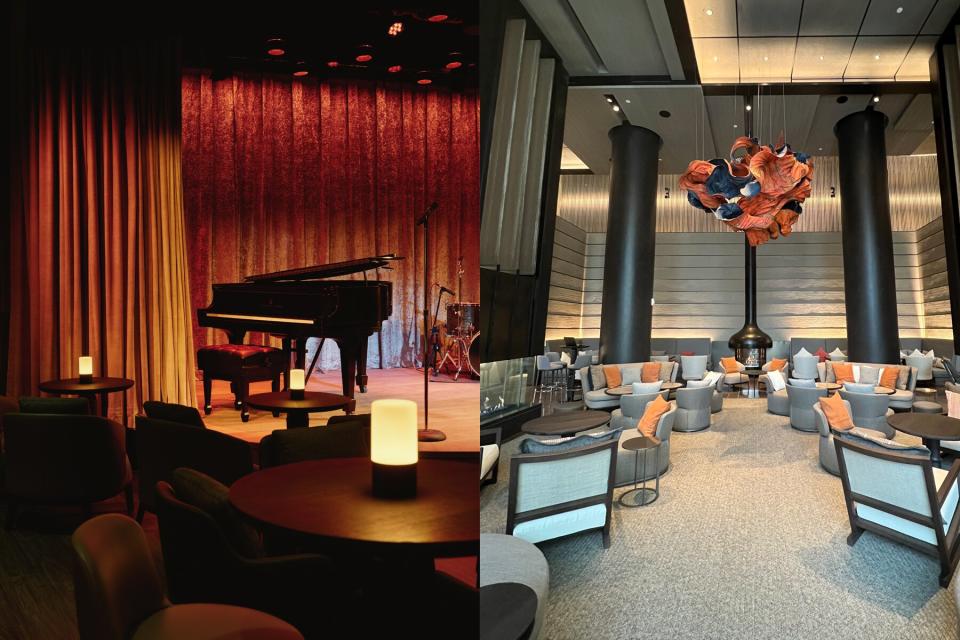
From left: Robert Rieger/Courtesy of Aman Resorts; Maya Kachroo-Levine
After that, it gets a little less Cognac with a view and a little more Prohibition-style cheeky. Because the pièce de résistance of Aman New York isn't the crown of the building but the Jazz Club found on the -1 floor. The subterranean operation, still in previews, will have live music five nights a week by September — from 7 to 9 p.m. — and a DJ after 11.
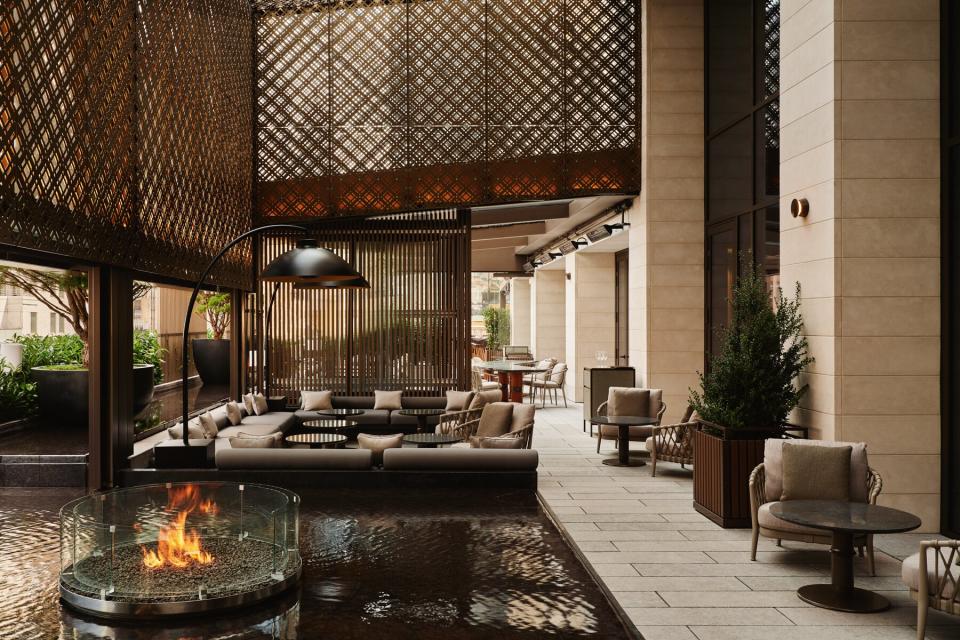
Robert Rieger/Courtesy of Aman Resorts
The next morning, after rinsing the night off under my high-tech, button-operated rain shower, I returned to the Garden Terrace to find it completely empty (save a construction worker or server, moving in or out of frame). Even on the open-air deck, the sound of silence followed me and the hassle of city life felt, well, at least 14 stories away.
Come September, when more Aman Club members are granted admission from the waitlist and eager overnight guests pour back into the city, the 7,000-square-foot deck will inevitably fill. And yet, I doubt it will ever feel crowded the way you might expect the most anticipated terrace in New York City to. That's the beauty of the Garden Terrace, canopied in bronze, lulling guests into elegant relaxation with a massive, fire pit–flanked marble fountain. It's not meant to be the most packed terrace in NYC. It's supposed to be the hardest to get onto. And trust me, it is.

